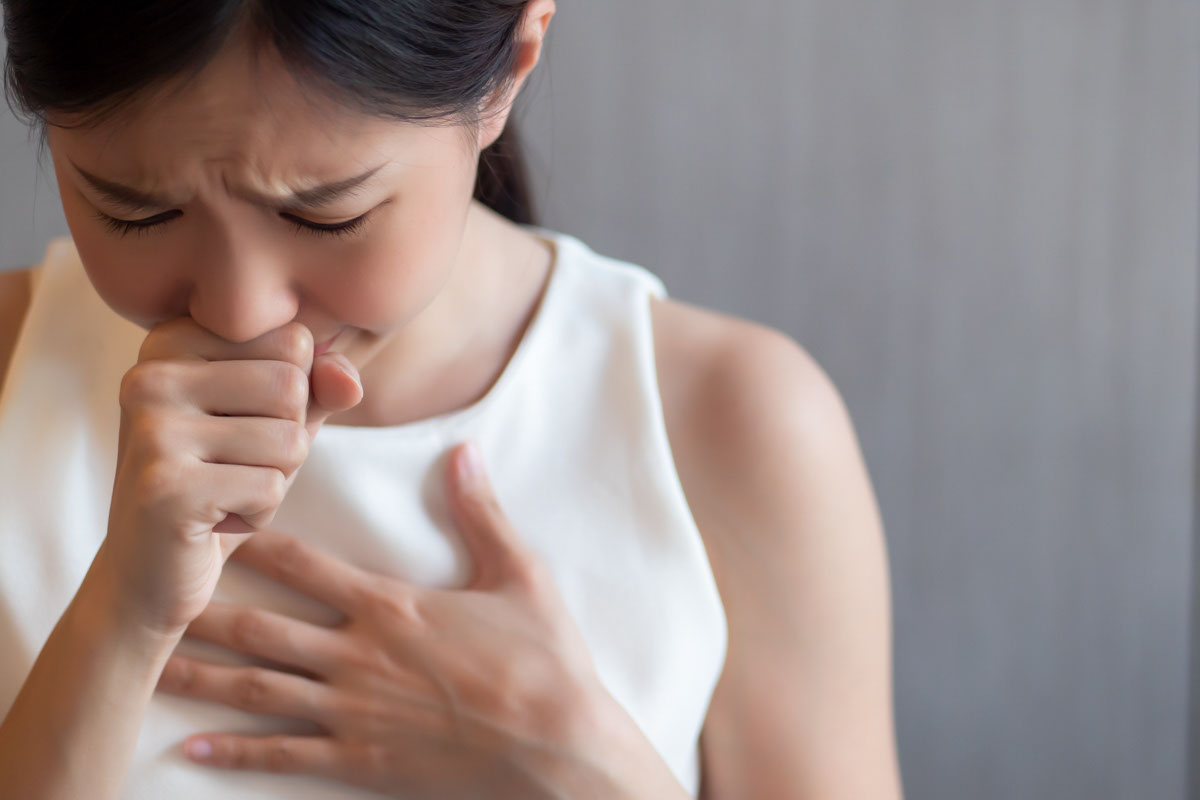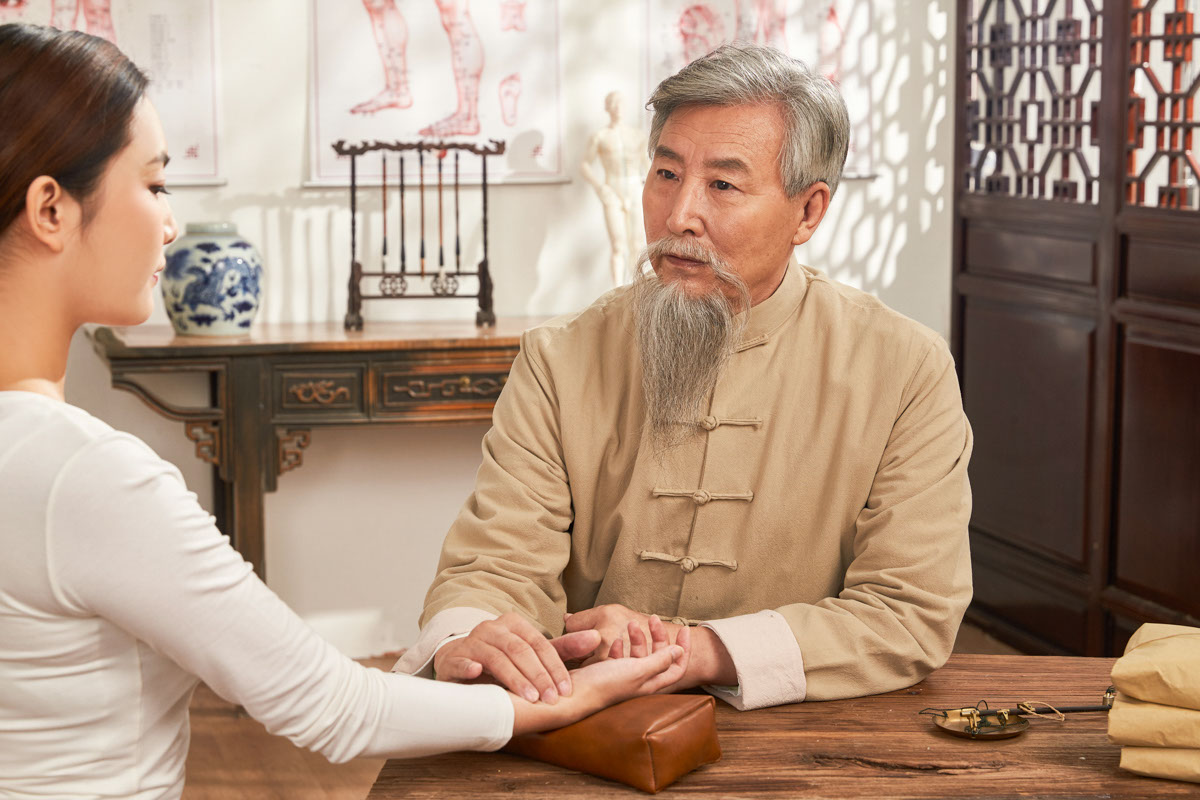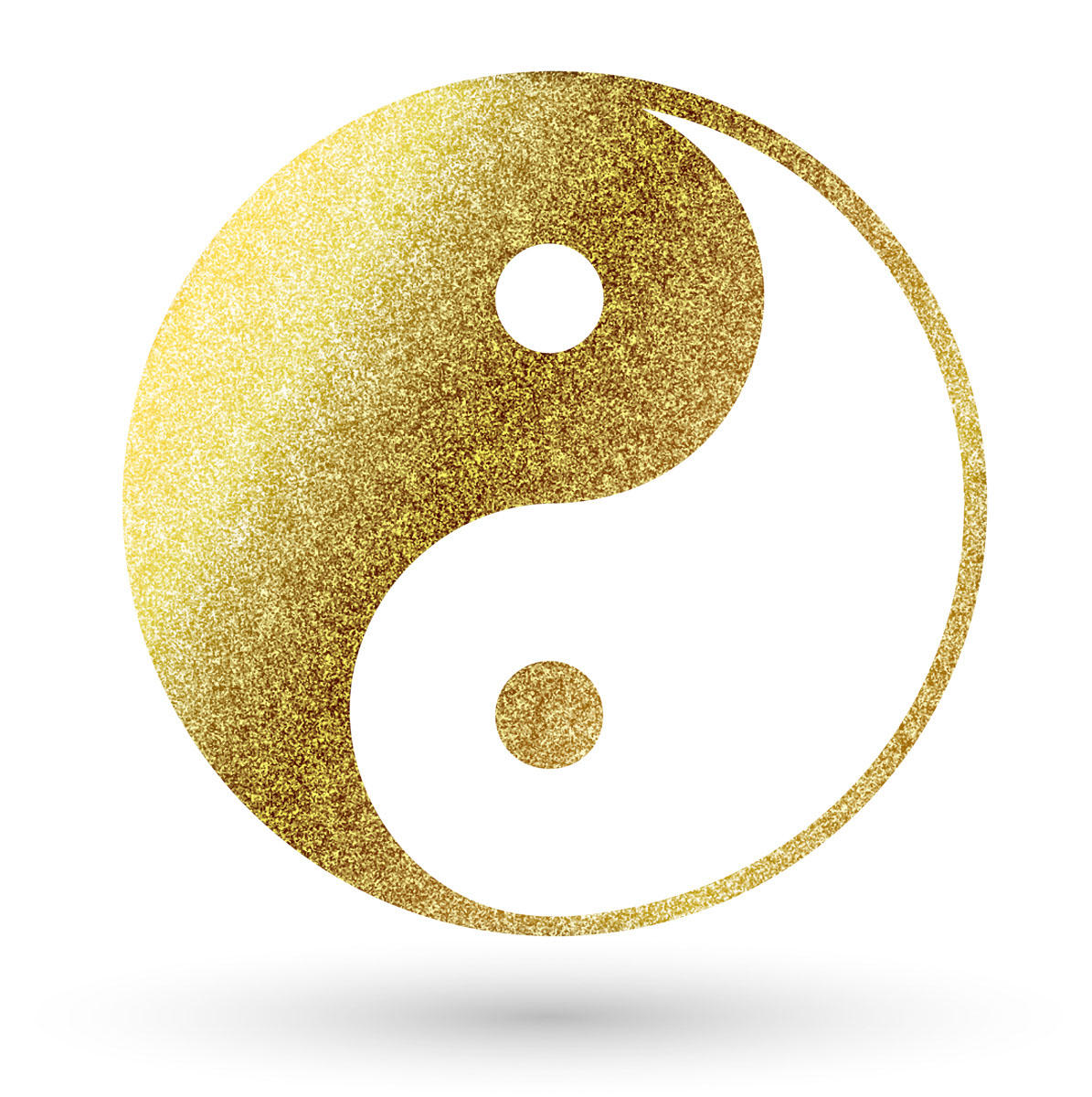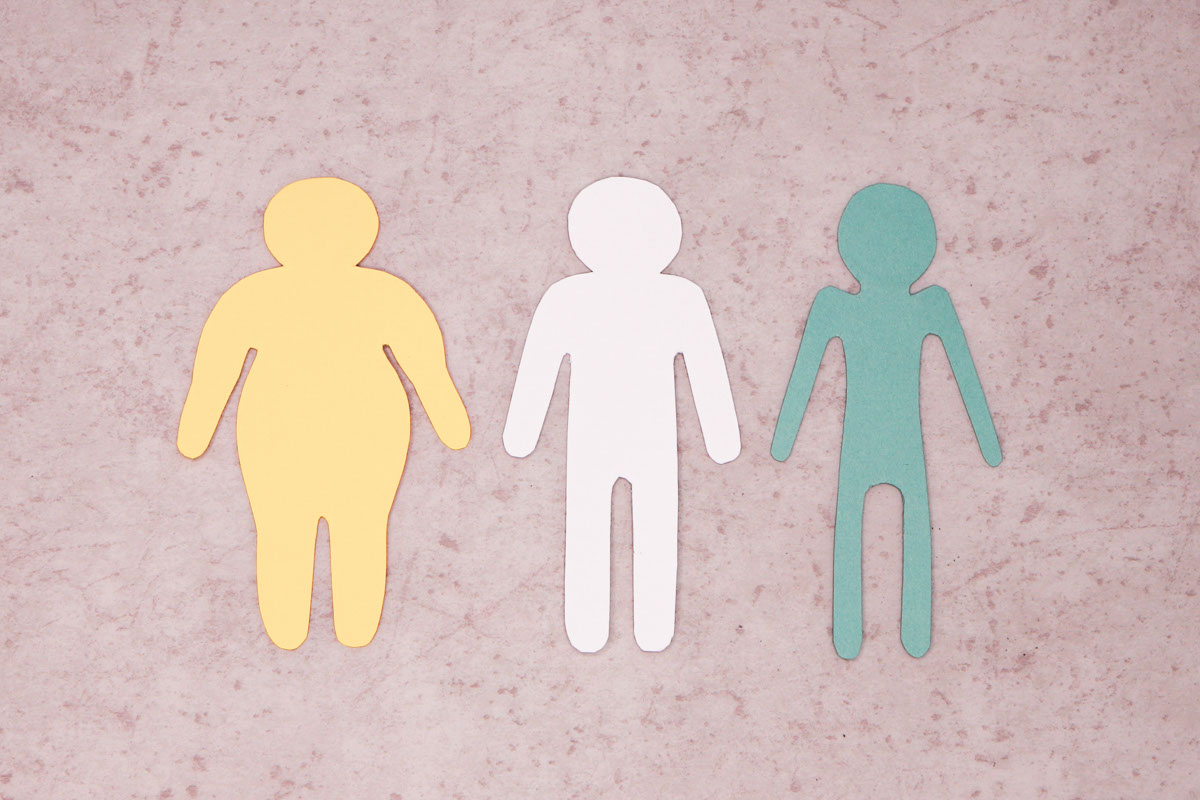How Do Traditional Chinese Medicine Practitioners Diagnose Diseases?
(I) Inspection(望), Listening and Smelling (Examination)(聞), Inquiry(問), and Palpation (切)
(II) What is syndrome differentiation(辨證論治)?
(III) What is the Eight Principles syndrome differentiation(八綱辨證)?
(IV) Besides the Eight Principles syndrome differentiation, what are the main methods of syndrome differentiation in traditional Chinese medicine?
(V) Besides "syndrome differentiation"(辨證), is there "disease differentiation"(辨病)?
(VI) How to differentiate body constitution(體質)?
(I) Inspection, Listening and Smelling (Examination), Inquiry, and Palpation(望、聞、問、切)
(1) What is "Inspection"(望)?
Traditional Chinese medicine observes all visible signs of the whole body and local parts, as well as excretions, to understand the health or disease status of the patient, which is called Inspection.
The basic theory is the close relationship between the external appearance of the human body and the internal organ function. If the organ function is abnormal, corresponding changes or signs will inevitably appear in the spirit, color, shape, and state of the external body.
The content of "Inspection" mainly includes:
- inspection of the vitality(望神);
- inspection of the complexion(望色);
- inspection of the shape(望形);
- inspection of the state(望態);
- inspection of tongue manifestation(望舌象);
- Collateral vessels(絡脈);
- Skin(皮膚);
- Five senses and nine orifices(五官九竅); and
- The shape, color, and quality of excretions and secretions(排泄物及分泌物的形、色、質等).
The content of tongue manifestation and complexion observation is extensive, so it has formed two independent diagnostic methods in traditional Chinese medicine: complexion diagnosis and tongue diagnosis.
(II) What is "Listening and Smelling (Examination)"(聞診)?
"Listening and Smelling (Examination)" includes listening to the sound and smelling the odor.
Listening to the sound includes examining the patient's:
- Voice;
- Language;
- Breathing;
- Cough;
- Vomiting;
- Hiccup;
- Belching;
- Sighing;
- Sneezing; and
- Bowel sounds.
It is mainly based on the volume, pitch, and clarity of the sound to determine the cold(寒), heat(熱), deficiency(虛), and concreteness(實) of the disease and the affected organs.
Smelling the odor includes:
The patient and the patient's room. For example:
Patient(病體) - When the condition of a diabetic patient worsens, there will be a rotten apple smell in the mouth, etc.
Patient's room(病室) - There will be a bloody smell in the room of a patient with blood loss; a urine smell will appear in the late stage of edema.

(3) What is "Inquiry"(問診)?
"Inquiry" refers to a method in which traditional Chinese medicine provides a basis for diagnosing diseases by asking patients and their families to understand the current symptoms and their medical history. Most of the evidence obtained from the four diagnoses of Inspection, Listening and Smelling (Examination), inquiry, and Palpation comes from inquiry.
For example: A patient comes for a consultation, saying "Doctor, I have a cough." Then for the symptom of cough, the Traditional Chinese Medicine practitioner will definitely ask: "Do you cough during the day or at night?" "Do you cough in the first half of the night or the second half?" "Do you cough as soon as you lie down or do you cough after falling asleep?" and so on; the doctor asks in detail, and the patient also needs to describe as clearly as possible. This is very important in Chinese medicine consultation.
(4) What is "Palpation"(切診)?
Palpation includes taking the pulse and body palpation.
Pulse taking(切脈)
Pulse taking(切診), also known as pulse diagnosis(脈診), has a unique characteristic of Chinese medicine, so some people also call pulse diagnosis as pulse palpation. Pulse taking is a unique method of Chinese medicine. Once the finger is placed on the pulse, it can detect the body's problems. Nowadays, Chinese medicine practitioners generally palpate the inch-mouth pulse(寸口脈), which is the wrist of the left and right hand. The pulse can reflect a person's qi and blood, the prosperity and decline of the five internal organs, the severity of the disease, etc.
Body Palpation(按脈)
Body Palpation refers to the diagnosis of diseases by touching and pressing the skin, hands and feet, chest and abdomen and other parts of the body, such as: lumps in the chest and abdomen, swelling of the skin, warmth and coolness of the hands and feet, painful parts, etc.
In clinical practice, both pulse taking and body palpation have significance, and they should not be biased and emphasized, and they need to be combined to diagnose diseases.

(II) What is the syndrome differentiation and treatment of Chinese medicine(辨證論治)?
Syndrome differentiation and discussing treatment(辨證論治), also known as syndrome differentiation and administering treatment(辨證施治), includes two processes ——-syndrome differentiation(辨證) (that is, diagnosis of disease) and treatment (that is, treatment of disease)(論治).
Chinese medicine syndrome differentiation, different from the diseases and symptoms people talk about, is a summary of the pathological characteristics of the patient's disease by the doctor, including the location of the disease, the cause, the nature, and the relationship between evil and righteousness.
Next is to choose the appropriate treatment plan based on the results of syndrome differentiation. In clinical practice, you can see a couple coming to see a doctor together, both of them have a cold, but the Chinese medicine prescriptions they get may be completely different. This is because the couple may have different physical constitutions, so the symptoms they show are different, and the syndromes of Chinese medicine are also different. Therefore, even if they are the same disease——cold, the treatment methods are also different. This is exactly where the characteristics of Chinese medicine's "syndrome differentiation and treatment" lie.
(III) What is the Eight Principles Syndrome Differentiation(八綱辨證)?
(1) Definition
There are many methods of syndrome differentiation in Chinese medicine, and the most basic method is the Eight Principles Syndrome Differentiation. The "Eight Principles" refer to
- Yin(陰);
- Yang(陽);
- Exterior(表);
- Interior(裏);
- Cold(寒);
- Heat(熱);
- Deficiency(虛); and
- Concreteness(實).
"Eight Principles Syndrome Differentiation " is a process to collect clinical symptoms through four diagnoses, and then analyze the location, nature, and the situation of the disease, such as whether it is in the exterior or interior, cold or heat, deficiency or concrete, yin or yang, etc.
(2) Example
When a patient comes for a headache, the Traditional Chinese Medicine practitioner needs to distinguish:
・Is it a deficiency syndrome(虛證) or a concrete syndrome(實證), is it a deficiency headache (for example, likes pressure, person feels comfortable when pressed) or a concrete headache (for example, it hurts like a needle prick and cannot bear to be touched)?
・Is it an exterior syndrome(表證) or an interior syndrome(實證), is the headache caused by external evil (for example, catching a cold) or by the viscera itself (for example, because of high blood pressure)?
・Is it a cold syndrome(寒證) or a heat syndrom(熱證), if clinically the patient has red face and eyes, restlessness, fever, drinks a lot of water, has a loud voice, dry stool, yellow urine, etc., it is mostly a heat syndrome; on the contrary, if the patient shows pale or dull complexion, listlessness, fatigue, fear of cold, shortness of breath, loose stool, clear and lots of urine, etc., it is mostly a cold syndrome; and
・Yin and Yang are the cumulating of cold and heat, deficiency and concrete, exterior and interior. Therefore, when you see the manifestations of inhibition, calmness, decline, darkness, etc., which belong to interior syndrome, cold syndrome, deficiency syndrome, they are generally classified as Yin syndrome; when you see the manifestations of excitement, restlessness, hyperactivity, brightness, etc., which belong to exterior syndrome, heat syndrome, excess syndrome, they are generally classified as Yang syndrome.
In clinical practice, the eight principles syndrome differentiation of cold and heat, deficiency and concrete, and exterior and interior, can be seen in one person at the same time, such as a patient who has both evil excess (邪實) and righteous deficiency(正虛), or both exogenous exterior syndrome(外感表證) and endogenous interior syndrome(內傷𥚃證). In addition, under certain conditions, the syndrome can transform into its opposite. For example, the disease moves from the interior to the exterior, indicating that the disease is getting better; from the exterior to the interior, indicating that the disease is developing and intensifying, etc.

(IV) Besides the Eight Principles Syndrome Differentiation, what are the main diagnostic methods in traditional Chinese medicine?
Commonly used diagnostic methods in traditional Chinese medicine generally include the following:
- Eight Principles Syndrome Differentiation(八綱辨證);
- Qi, Blood, Body Fluid Syndrome Differentiation(氣血津液辨證);
- Visceral Syndrome Differentiation(臟腑辨證);
- Six Meridian Syndrome Differentiation(六經辨證);
- Defence Qi, Nutrient and Blood Syndrome Differentiation(衞氣營血辨證);
- Triple Energizer Syndrome Differentiation(三焦辨證); and/li>
- Meridian and Collateral Syndrome Differentiation(經絡辨證).
In fact, clinical diseases are complex and diverse, and the diagnostic methods of Traditional Chinese Medicine practitioners are not limited to the above. Different diagnostic methods are like "eighteen kinds of martial arts", different traditional Chinese medicine doctors have their own "expertise" (i.e., commonly used diagnostic methods), so there are the strengths of a hundred schools of Traditional Chinese Medicine, and various diagnostic and treatment methods are compatible and inclusive.

(V) Besides "syndrome differentiation"(辨證), does traditional Chinese medicine also perform "disease differentiation"(辨病)?
Disease differentiation and syndrome differentiation are both processes of understanding diseases in traditional Chinese medicine. "Disease differentiation" (辨病)refers to the diagnosis of the disease; "syndrome differentiation" (辨症)refers to the identification of the syndrome in traditional Chinese medicine. Although they are different, they are both the basis for the establishment of treatment principles, methods, and prescription of medicines.
"Disease differentiation" is usually the first step in disease diagnosis, determining what disease the patient has according to the diagnostic criteria of the disease, such as whether it is diarrhea or constipation. Based on the judgment of the disease, the second step is to determine the type of syndrome the disease causes according to the patient's clinical manifestations and physical condition. In this way, it can be more completely concluded: what disease the patient has, and at the same time know what syndrome the patient shows and belonging to which syndrome type. Usually, a disease can manifest as different types of syndromes in clinical practice, so the syndrome is equivalent to further subdividing the patient's condition according to symptoms and physique on the basis of the disease level, which is more conducive to precise treatment.
In Traditional Chinese Medicine, the clinical diagnosis has always combined disease differentiation and syndrome differentiation. The thinking of disease differentiation and syndrome differentiation in Traditional Chinese Medicine has always coexisted and is equally important.
In the modern clinical process, many patients already have a clear Western medicine diagnosis when they approach a Traditional Chinese Medicine practitioner. The latter will then make use of the disease diagnosis of Western medicine as a foundation, and combine such with the syndrome differentiation method of Traditional Chinese Medicine. Such combination of the east and the west can better improve the effect of clinical treatment.

(VI) How does traditional Chinese medicine differentiate constitutions?
Modern traditional Chinese medicine often uses "nine constitutions"(九種體質)to judge the human body:
1. Balanced constitution(平和質): rosy complexion, radiant, energetic, good body, stable mood, can adapt to the environment well.
2. Qi-deficiency constitution(氣虛): pale complexion, speaks softly, easy to sweat, sweats a lot with a little activity, small appetite, easy to bloat after meals, usually has loose stools, weak bowel movements, easy to feel tired, often catches colds, etc.
3. Yang Deficiency(陽虛): The main characteristics are fear of cold, cold hands and feet, fear of air conditioning and cold, inability to eat cold food, easy fatigue, lack of energy, prone to diarrhea, dysmenorrhea, obesity, edema, infertility, stiffness and pain in muscles and joints, etc.
4. Yin Deficiency(陰虛): Red cheeks, dry mouth and tongue, dry skin, dry eyes, hot palms and soles, dry stool, less urine, etc.
5. Blood Stasis(血瘀): Dark complexion, dark lips, prone to spots, dark circles under the eyes, skin often has bruises and is dry and rough, the body often has various pain symptoms, etc.
6. Phlegm-Dampness(痰濕): Obese body shape, big belly, soft muscles, excessive facial oil secretion, sweating when moving, weak limbs, easy to feel tired, frequent or loose stools, etc.
7. Damp-Heat(濕熱): Oily skin, bad breath, prone to acne, pimples, blackheads, yellow face, irritable and easy to get angry, sticky stool, yellow urine, etc.
8. Qi Stagnation(氣鬱): Gray or yellowish complexion, melancholic, easy to get nervous, often chest tightness, feeling of foreign body in the throat, easy to have insomnia and depression.
9. Special Constitution(特稟質): Sensitive to drugs, food, smells and pollen, prone to symptoms of nasal and skin allergies such as nasal congestion and rash, seasonal changes can trigger chronic diseases.
(January 2022)





